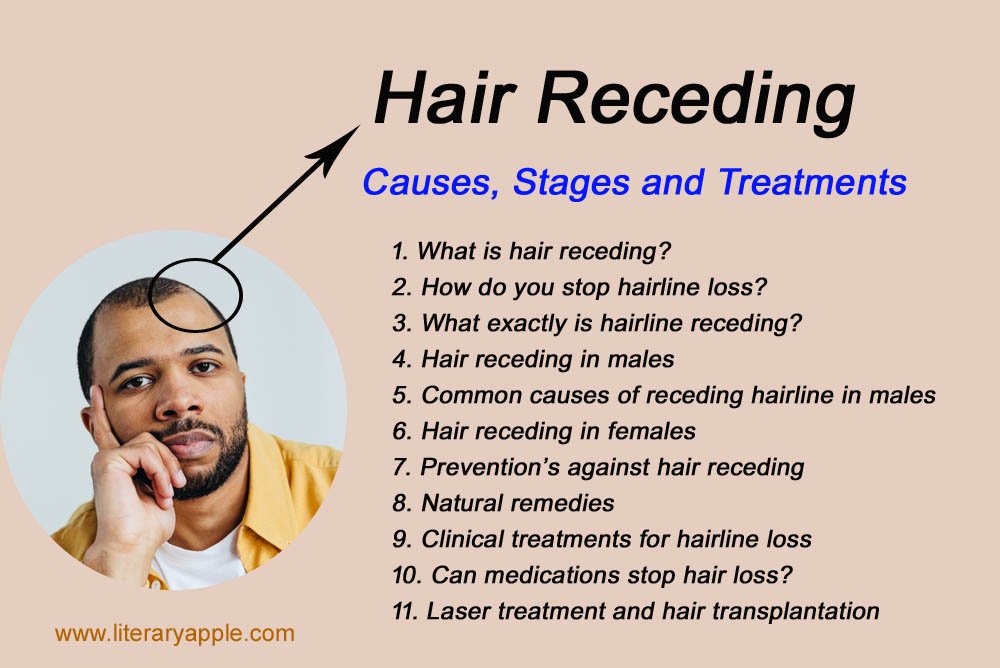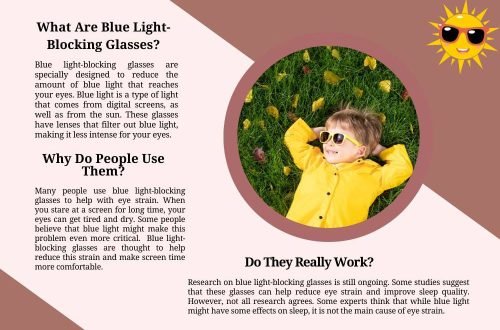Receding Hairline: Causes, Stages & Treatments
In this article, we will discuss all about receding hairline. What are the reasons for hair receding? How do males and females get affected by this? What are the remedies and treatments for hairline receding? We will cover the below topics in this article about hairline receding:
- Hairline receding | how do you stop hairline loss?
- What exactly is hairline receding?
- Hairline receding in males.
- Common causes of receding hairline in males.
- Hairline receding in females.
- Prevention’s against hairline receding | Natural remedies.
- Clinical treatments for hairline loss.
- Can medications stop hair loss?
- Laser treatment and hair transplantation.

Receding Hairline: Causes, Stages and Treatments
Hairline Receding | How Do You Stop Hairline Loss?
It is difficult to reverse hairline recession once it starts but not impossible. A receding hairline is the most frequent hair concern these days. It can lead to baldness if not treated timely. As we become older, many things alter. One of them is undoubtedly the hairline. It may be frustrating to watch oneself age with so much hair loss.
You glance in the mirror and wonder, “where is my hair going?” and then become concerned. Not to worry, for everything has a solution.
Please be assured that hair receding is not incurable. Treatment and cures can undoubtedly help you avoid it. There are several reasons that contribute to hairline loss. This article will go through the causes and treatments of receding hairlines.
What Exactly Is Hairline Receding?
Hairline receding is the name given to hair thinning and associated hair loss on the scalp. The first signs of hairline receding appear on the temples and continue to the top of the head. As a result, receding hairline spots are formed on the top and front of the scalp.
Hairline Receding in Males
Men’s receding hairlines can occur at any age following puberty. Hairlines are receding in many men in their late 30s. The process is frequently started above the temples. The hairline then resumes its journey to the crown of the head. This frequently results in a ring of hair around the bare scalp’s tip. Furthermore, thinning hair may continue to grow.
Although the hair receding in males may begin above the temples, the hair in the center may remain near the brows. This bang’s v-shaped development is frequently known as the “widow’s peak.”
Common Causes of Receding Hairline in Males
Almost all hair receding in males is caused by male-pattern baldness, a genetic characteristic inherited from your parents. Other reasons include some drugs, an excess of vitamin a, or a lack of protein. Illness or stress can cause telogen effluvium, or abrupt, profuse shedding.
Inherited Hairline Loss
Male pattern bald patients frequently have family members who also have the illness. You are more prone to acquire hairline receding if you have a close relative who has the condition. Hair receding is supposed to be passed down from the mother’s side of the family.
Hormonal Changes and Hairline Receding
Hair grows slower and becomes significantly thinner when estrogen and progesterone levels fall. A drop in these hormones leads to an increase in the production of androgens, a kind of male sex hormone that induces hair follicles to constrict, resulting in scalp hair loss.
Stress Can Be the Reason for Hairline Receding
Luckily, stress and anxiety do not cause permanent hair receding in males. However, they cause temporary hair fall. Hairline loss is due to stress and can be cured by eating healthy food and exercising.
Hairline Receding in Females
Many individuals believe that hair receding affects exclusively men. However, it is believed that more than half of all women suffer from visible hairline loss. Hair loss may affect every girl or woman. It is more prevalent though, when:
- Women are aged 40 and above.
- A mother who recently gave birth.
- Women who had chemotherapy and those who had been exposed to other medications.
- Women frequently use harsh chemicals on their hair or employ hair-pulling hairstyles (such as tight ponytails or tight braids).
Common Causes of Hairline Receding in Females
Hairstyles: When hair is gathered in such a way that it tugs at the roots, as in ponytails, braids, and cornrows squeezed traction alopecia is the medical term for this type of hairline receding. Hair follicle damage can cause permanent hairline loss.
- A lack of vitamins
- Rapid weight loss
- Dietary restrictions
- Hair that has been overworked (cut hair)
Pregnancy and Hairline Loss
Alopecia (another name for receding hairline) is frequent and perfectly normal for many pregnant women. Hormonal levels fluctuate on a regular basis as the body changes after pregnancy, with post-pregnancy hairline loss, being the most prevalent. This form of hair loss is often transient and returns after a few months.
How Genetics Can Be the Reason for Hair Loss
Women can inherit hairline receding, albeit it is less prevalent than in men, and this gene can be acquired from either parent. Hairline loss due to genetics is more prevalent when a woman approaches middle age, but it can occur sooner. Around this period in a woman’s life, she may also be going through menopause, which triggers hormonal changes in the body that can contribute to hair receding in females.
Stress and Hairline Receding
Hair can develop because of stressful situations. Severe stress can cause a high number of hair follicles to enter a dormant phase of the hair production cycle, inhibiting the growth of new hair. This, together with hairline loss, can result in baldness and thinning hair. This form of hair loss is often transient and improves with time.
Menopause and Hairline Receding in Females
Menopause may reveal one or two things about hair. Where there was no hair previously, hair may now start to develop. On the other hand, you have noticed that your hair is getting thinner. Menopause-related changes in hormone levels may have a role. The effects of androgens, or male hormones, rise when levels of estrogen and progesterone decline.
Preventions Against Hairline Receding | Natural Remedies
What to use for receding hairline? Note that once hair is lost due to recession, they are difficult to bring back naturally. However, some remedies slow down the process and thicken the hair. Hairline receding can be prevented by following natural tricks.
Peppermint Oil for Hair Loss
The menthol found in peppermint oil increases blood flow to the scalp and helps reduce hair fall. A 2014 mouse study found that peppermint essential oil promoted hair growth.
Vitamin B12/ Folic Acid
The synthetic form of the B vitamin folate is called folic acid, which aids in DNA synthesis in cells, lowers inflammatory markers, and prevents anemia. Anecdotally, some people claim that folic acid helps prevent hair receding.
Biotin Supplement To Stop Hairline Loss
Your body needs the B vitamin biotin to turn food into energy. Some people rely on biotin supplements to grow and repair their hair. There is evidence that biotin may benefit various health concerns, but further research is required to discover whether it thickens hair.
Avoid Smoking
- If you smoke, giving up the habit may help you slow or stop your hairline from receding.
It has been demonstrated that the toxins in cigarette smoke harm hair follicles and accelerate the receding hairline.
Head Massage To Stop Hairline Receding
Your hair may regenerate if you regularly massage your scalp, which may stimulate blood flow to the area. The majority of the evidence for this procedure is anecdotal, however, at least one tiny research exists. This may be effective to produce a thicker hairline, according to a reliable source.
Clinical Treatments for Hairline Loss
Your doctor will perform a physical exam, inquire about your medical and family history, and maybe ask you about your food and hair care regimen before establishing a diagnosis.
Blood analysis: This can aid in locating health issues that can cause a receding hairline.
Pull test: Doctors gently pluck hundreds of hairs to count the hairs that are falling out. This aids in identifying the process’ separation phases.
Scalp biopsy: Doctors take samples of the epidermis or hairs taken from the scalp to study the hair roots under a microscope. This will assist in determining whether a disease is to blame for the hairline receding.
Optical microscopy: Your health practitioner examines hairs that have been clipped at their bases with the usage of a specialized tool. Discovering the capacity of hair shaft sickness with the resource of microscopy.
Can Medications Stop Hair Loss?
Yes! Treatment for the underlying circumstance this is inflicting your hairline loss may be required. Your health practitioner may want to endorse stopping taking certain medications for some months if it is causing a receding hairline.
Treatment Alternatives Exist for Hairline Loss the Maximum Traditional Picks
Minoxidil is the most popular over-the-counter (OTC) treatment for a receding hairline (Rogaine). This is a non-approved application of rogaine. Topical minoxidil has been demonstrated in studies to be more effective than a placebo. An irritated scalp and unwelcome hair growth on the nearby skin of the hands and face are potential side effects.
Finasteride (prophecies) for men, this drug is prescribed. Many men using finasteride experience slower hair loss and some even report new hair growth. To get all the benefits, you need to take it consistently. Finasteride may not work for men over the age of 60.
Rare side effects of finasteride include decreased libido and sexual function and an increased risk of prostate cancer. Women who are pregnant or may become pregnant should not handle broken or crushed medicines.
Laser Treatment and Hair Transplantation
In order to fill in the thinning hairline, a hair transplant entails transplanting hairs and chunks of scalp from thicker areas of the head to the front. Although the procedure is pricey, many people believe it to be a better long-lasting fix for a receding hairline. Some patients may have an increase in hair growth and a decrease in hairline recede while receiving laser therapy utilizing red light or a laser frequency of 660 nm.
The Bottom Line
What is a receding hairline? Receding hairline is the loss of hair due to different causes. This situation can affect females and males both. Hair loss can be prevented by different treatments and remedies mentioned in this article.

You May Also Like

Are Blue Light-Blocking Glasses Beneficial for Eye Health?
22/07/2024
14 Best Weight Loss Exercises
26/01/2022